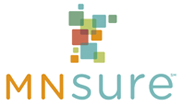About the Plans
Plans Offered through MNsure
Private health and dental plans are offered by partnering insurance companies through the MNsure marketplace. These are also known as qualified health plans (QHPs) or qualified dental plans (QDPs).
All private plans offer the same core set of benefits called essential health benefits. These include preventive services, mental health and substance abuse services, emergency services, prescription drugs and hospitalization, and follow established limits on cost sharing (deductibles, co-payments and out-of-pocket maximum amounts). Each private health and dental plan has been reviewed by state regulators and approved to be sold through MNsure.
Consumer Protections
All health plans on MNsure cover pre-existing conditions and other important consumer protections.
Essential Health Benefits
All plans offered on MNsure must cover 10 essential health benefits including maternity care, prescription drugs and hospitalization.
Health Savings Accounts
Details about personal savings accounts you can use for certain health care costs.
Insulin Affordability
How to find plans offering either low-cost or free insulin benefits.
Metal Levels
Most medical plans are categorized as one of four metals levels. These levels are based on how you and your plan split the costs of your health care.
Plan Rates
Rates for MNsure plans vary depending on household size, annual income, member age(s), the region in which you live, whether members use tobacco and the level of coverage you choose.
Plan Types
Learn about plan types to help you find the right level of coverage for you and your family.
